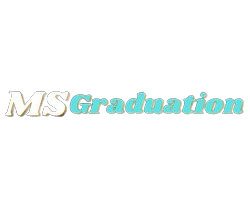[ad_1]
Faculty members need a philosophy of teaching statement when applying for jobs and throughout their time in higher education. Yes, ChatGPT could write it and it might look a little like this:
My philosophy of teaching is centered on the belief that all students have the potential to learn and succeed. To tap into this potential, I adopt student-centered approaches that prioritize student voice, choice, and agency in the learning process. I believe in the importance of creating a classroom environment that is inclusive, equitable, and accessible for all students. I also believe in using Universal Design for Learning (UDL) as a framework for designing instruction that meets the diverse needs of all students. This approach recognizes that learners have different strengths, preferences, and experiences and seeks to provide multiple ways of engaging with content, expressing what they have learned, and demonstrating their understanding. Active learning is another key aspect of my philosophy. I believe that students learn best when they are actively engaged in the learning process, rather than passively receiving information. I strive to create learning experiences that are hands-on, collaborative, and problem-based, giving students the opportunity to apply what they are learning to real-world scenarios. Finally, I place a strong emphasis on assessment as a tool for both learning and evaluation. I believe that assessment should be ongoing, formative, and meaningful for students, and that it should be used to inform instruction and support student learning. Assessment should not only measure what students have learned but also help them understand how they can continue to grow and develop. In summary, my philosophy of teaching is centered on student-centered approaches, universal design for learning, active learning, and the importance of assessment. By prioritizing these principles, I aim to create a learning environment that supports all students in reaching their full potential.
If we simply took this philosophy of teaching and moved ahead into practice, I would imagine that through higher education our college and university classrooms would be much different. However, we all can determine that by reading that AI-generated philosophy, we would need to tweak and edit it.
A well-written teaching philosophy statement should act as a guide during course design, development, instruction, and assessment as well as through programmatic development and revision. Further, a strong philosophy is an important piece to every rank and promotion portfolio. I encourage you to spend a few moments each semester to review your philosophy and to reflect on the practices you employ in your courses.
Questions or thoughts to consider:
- Does your philosophy align with the practices you employ?
- What is working?
- What is not working?
- How have students changed over time and how should you be adjusting your teaching to meet their needs?
- What scaffolding needs to be provided in order to bring students along in deeper course engagement?
These and a host of other questions can be part of your reflective process.
Once your philosophy is written, and it can certainly take a number of drafts to develop, consider the following ways of applying your teaching philosophy to classroom instruction:
- Align your instruction: Your lessons and activities should reflect your beliefs and values. Your assessment practices should support your goals and objectives for student learning.
- Create a supportive learning environment: How do you support and include all students? What language do you use? How do you promote diversity? What ways do you create a positive learning environment where students feel emotionally and physically safe? (Note: growth occurs at the edge of comfort, we don’t tolerate hate speech or racism, but we need to develop ways of listening and responding that respect all viewpoints).
- Use formative assessment: Use frequent, informal, formative assessment to monitor student learning and to inform your instruction. Notice this does not mean that everything has to be for a grade. This type of assessment can help you identify areas where students need further support.
- Foster student engagement: What activities/assignments are part of your instruction during class time that engage students individually, in small groups, and as a whole class? The more opportunities students have to apply their knowledge the more motivation will exist.
- Reflection: Utilize a reflective framework. Teaching is a craft and overtime you figure out what works and what does not. Spend time after each class taking short notes on your experiences (this is a great way to turn your teaching into scholarship). Engage your students periodically throughout a course to gain their perspective on teaching and learning and consider how you can use their feedback to make changes (if necessary).
- Stay current with best practices: Attend events as professional development through your Center for Teaching & Learning, or whatever name they may utilize. Read, read, read. Ask a peer from outside your discipline to observe your teaching and debrief afterwards. If you teach an online course, ask a peer to engage your course over a given week or module in your course through the learning management platform. Debrief. In a time where faculty appear to be more isolated, yet more connected through digital means, find someone to have a conversation with about teaching and learning.
Dr. Peter J. Stapleton is chair of the Department of Professional Education Programs at Russell Sage College (RSC) in Troy and Albany, New York. He also serves RSC as the director of the Center for Teaching and Learning.
Post Views: 894
[ad_2]


